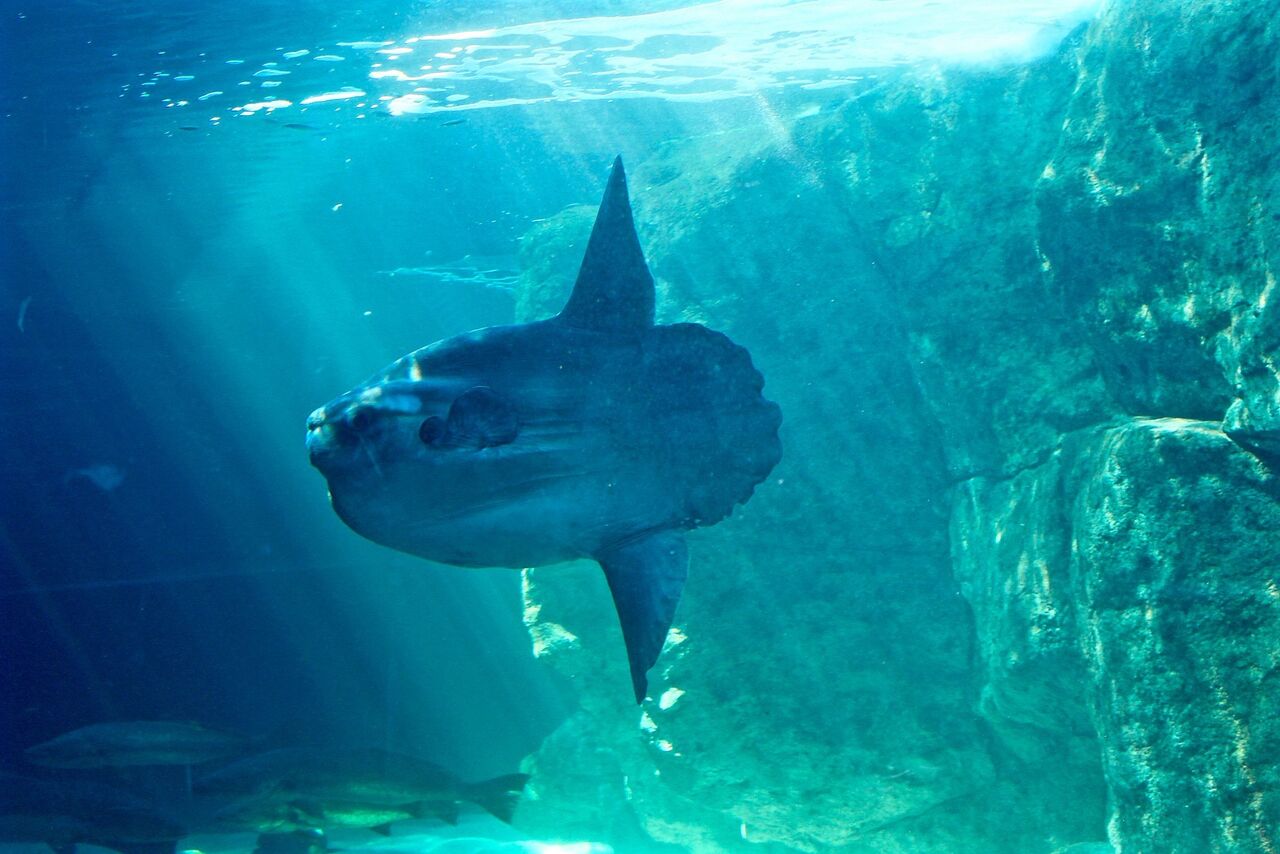Appearance and lifestyle:
The ocean sunfish (Mola mola) is a large, grey-blue, oval-bodied fish with prominent and powerful dorsal and anal fins, but no tail fin. This gives the sunfish the appearance of only being "half a fish." Despite its unusual appearance, it is an active swimmer and is highly manoeuvrable. They are the largest bony fish in the ocean - growing up to 3m in length and approximately 2000kg in weight. Ocean sunfish have relatively small mouths, with fused teeth that give it a parrot-like beak. Their skin is covered with a tough armour of dermal denticles, similar to that of sharks and rays. Sunfish get their name because of their habit of basking on their sides on the ocean’s surface. This is done to help regulate their body temperatures, as these fish can dive to well over 600m - into frigid waters.
Habitat:
Ocean sunfish are found in all the oceans of the world, excluding the icy polar seas.
Diet:
Ocean sunfish have relatively small mouths, with fused teeth that give it a parrot-like beak. The beak is internal and hidden from view except when feeding. They use this beak to feed of jellyfish and salps, but will opportunistically feed on squid, fish, crustaceans and brittle stars.
Threats:
Climate change, pollution, boat strikes etc.
